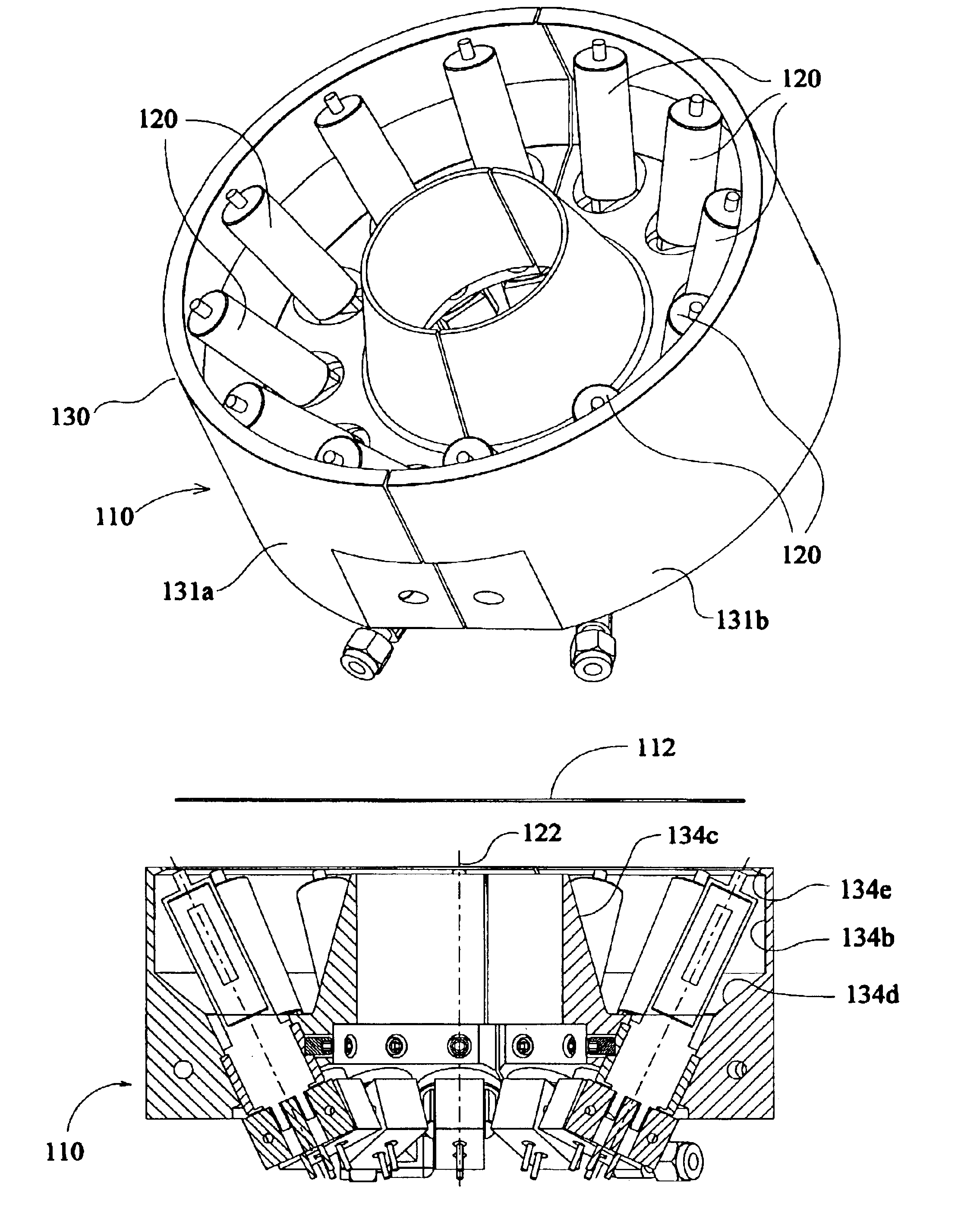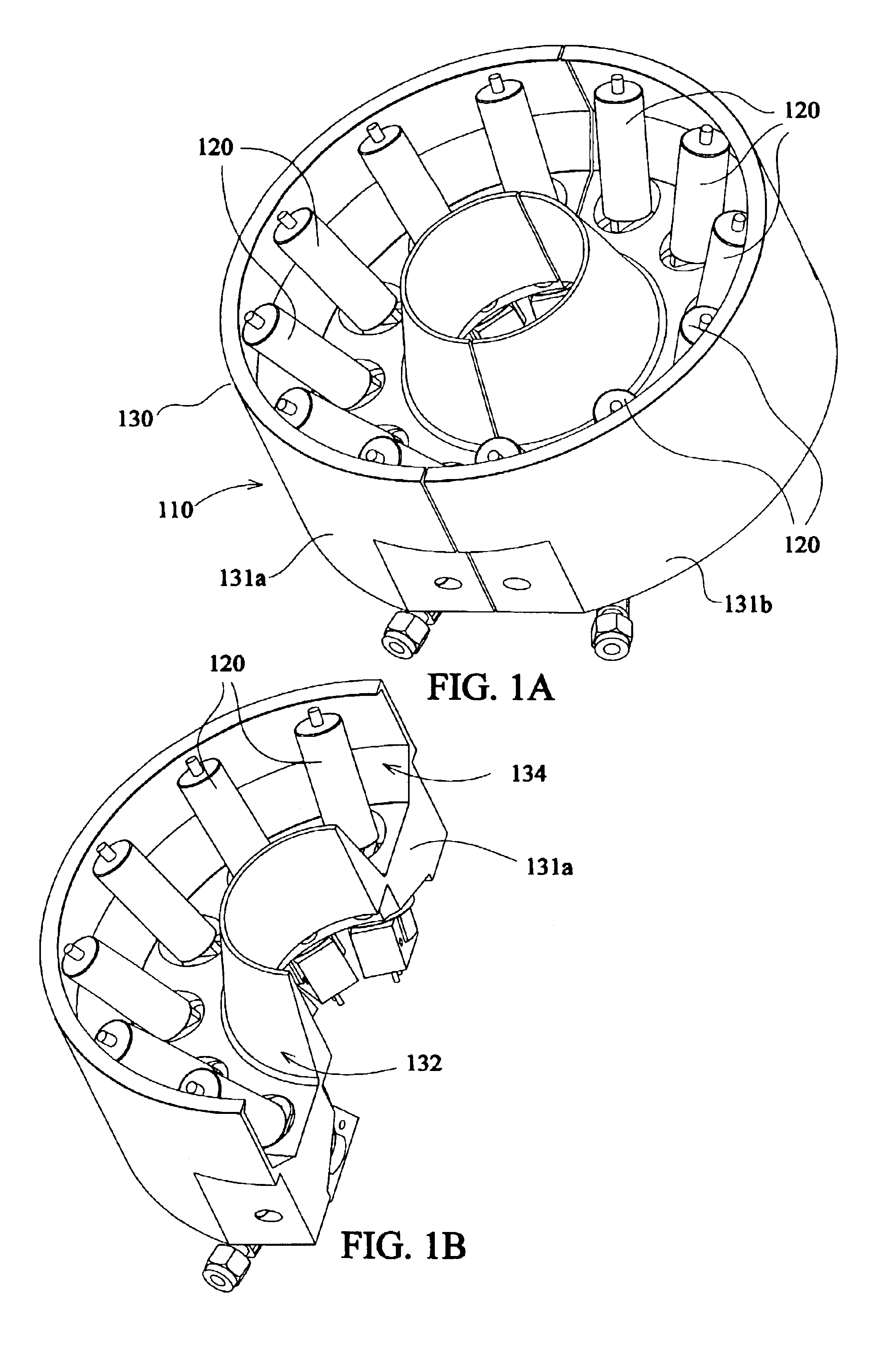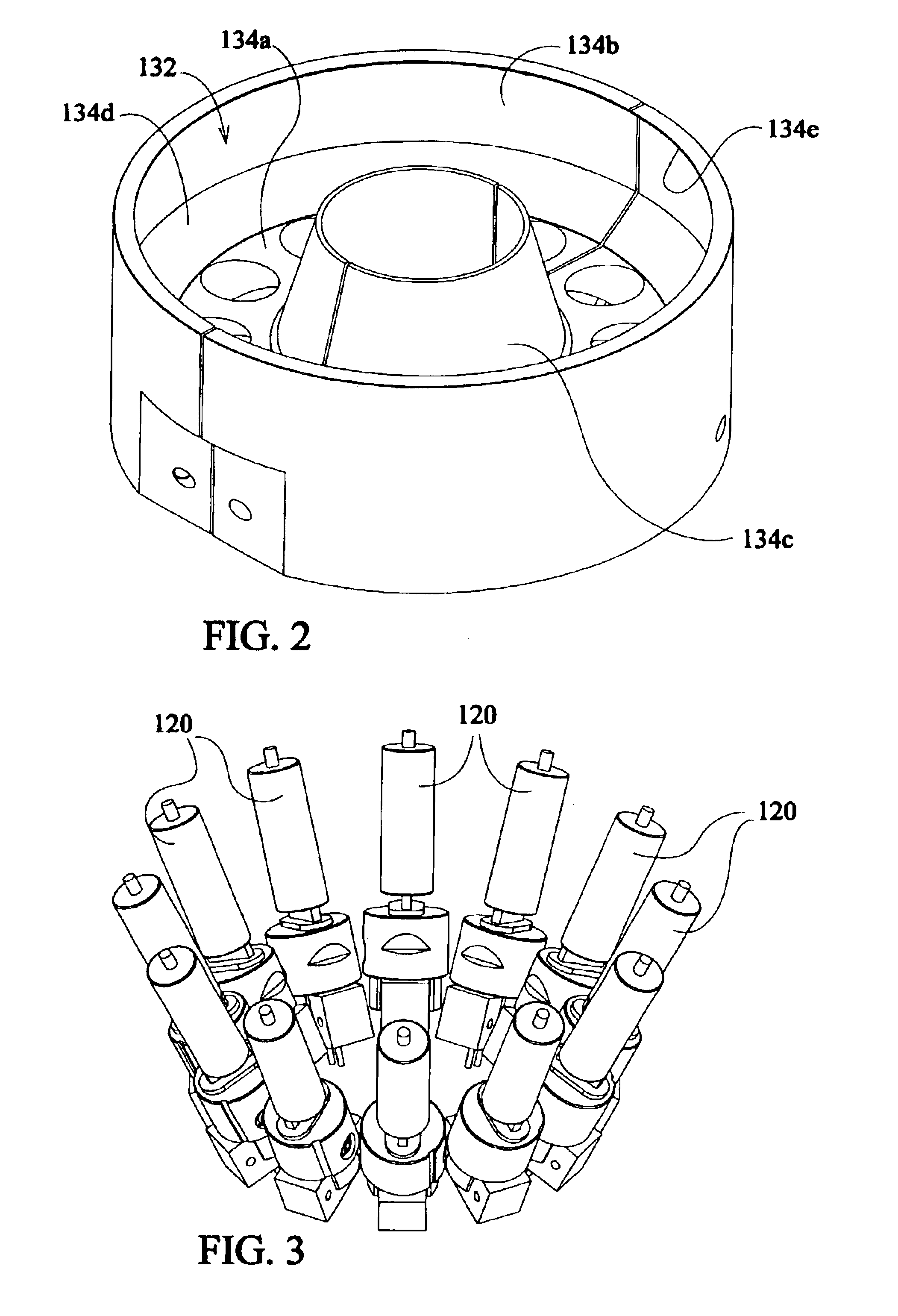Radiant heating source with reflective cavity spanning at least two heating elements
a technology of radial heating source and reflective cavity, which is applied in the field of heating source, can solve the problems of overexposure to plasma, subsequent damage of wafers, and limited time and surface uniformity of heating and gas delivery components of wafer processing systems,
- Summary
- Abstract
- Description
- Claims
- Application Information
AI Technical Summary
Benefits of technology
Problems solved by technology
Method used
Image
Examples
Embodiment Construction
[0051]FIG. 19 is a plan view of a prior art radiant lamp array for wafer heating in semiconductor processing chambers. FIG. 20 shows a perspective view of the apparatus of FIG 19. These depictions are similar to depictions shown in U.S. Pat. No. 6,023,555 to Penelon et al. The '555 patent is incorporated herein by reference. In each depiction, one half of an array of heating elements of sources is shown, the second half which is not shown is symmetric to the part shown in FIGS. 19 and 20. In the plan view of the FIG. 19 are also shown four of the eight individual heating elements 1. As described in the '555 patent they are quartz halogen bulbs.
[0052]FIGS. 19 and 20 also depict ellipsoidal shaped back reflectors 2 combined with the adjacent tubular reflectors 3 which have reflector surfaces that extend in a direction parallel to an elongated axis of an associated heating lamp. Each of the ellipsoidal and tubular reflectors is mounted next to an associated a single bulb heating elemen...
PUM
 Login to View More
Login to View More Abstract
Description
Claims
Application Information
 Login to View More
Login to View More - R&D
- Intellectual Property
- Life Sciences
- Materials
- Tech Scout
- Unparalleled Data Quality
- Higher Quality Content
- 60% Fewer Hallucinations
Browse by: Latest US Patents, China's latest patents, Technical Efficacy Thesaurus, Application Domain, Technology Topic, Popular Technical Reports.
© 2025 PatSnap. All rights reserved.Legal|Privacy policy|Modern Slavery Act Transparency Statement|Sitemap|About US| Contact US: help@patsnap.com



